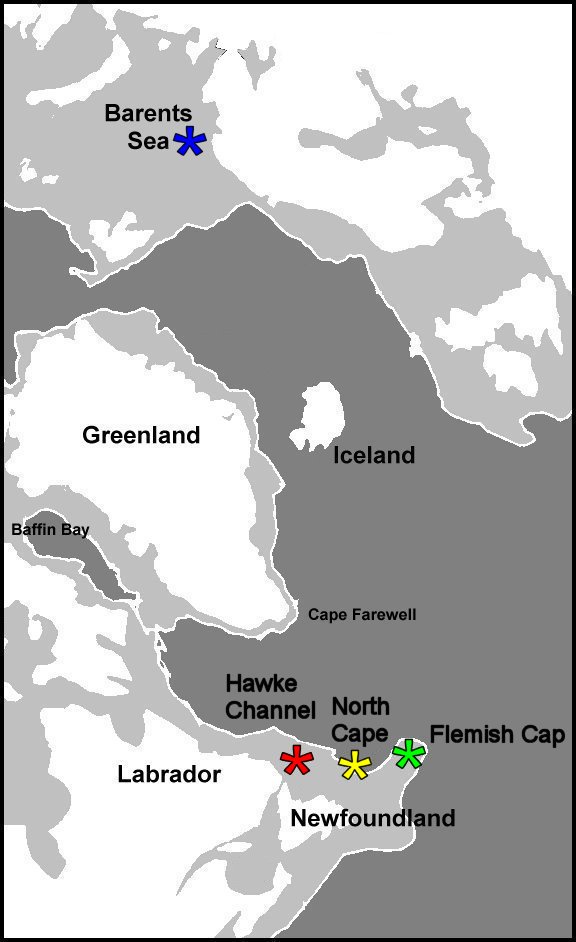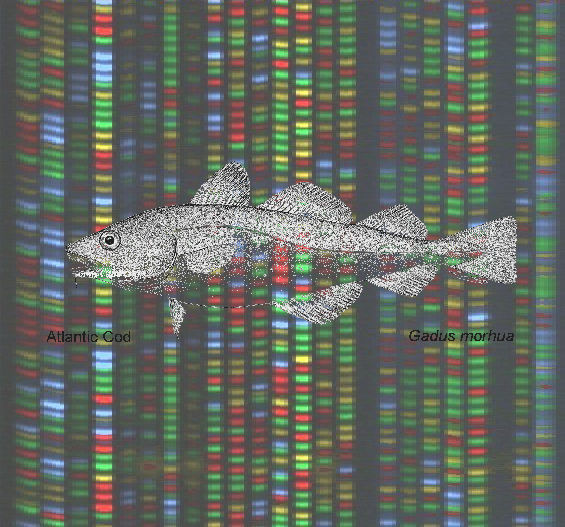

Population Genomics
& Stock Structure of Atlantic Cod on (&
off) the Flemish Cap:
insights from
whole-mitochondrial-genome DNA sequences
H. Dawn Marshall, Kim A. Johnstone,
Angela M. Pope, & Steven M. Carr*
"The Ecosystem of the Flemish Cap," 08 - 10
September 2004, Dartmouth NS
ABSTRACT
Genomics (the
study of complete gene sets
in organisms) and "genomic thinking" (the application of "massively parallel" biotechnologies
to data collection and analysis) are now being applied to studies
of biodiversity. We have
begun to analyze the complete
mitochondrial DNA genomes of animal
species as a
series of ordered, contiguous
fragments, both among related species and for multiple individuals within species.
Phylogeographic analysis
of completely-resolved intraspecific
gene trees provides the detailed
historical information and necessary statistical power to evaluate
dispersal phenomena at scales of interest to fisheries managers
and population biologists.
Atlantic Cod (Gadus morhua)
spawn in a variety of inshore and offshore areas along the
continental
shelf of Newfoundland and Labrador, including populations on and
off
the Grand Banks, and at Flemish
Cap, an offshore seamount. Analysis of complete mitochondrial DNA (mtDNA)
genome sequences for fish
from these populations has identified several hundred single-nucleotide
polymorphisms (SNPs). Every individual fish has a
unique mtDNA sequence:
there are as many as 50 pairwise SNP
differences among individuals, and these can be used to
determine exact relationships among individual fish in a "family
tree". Phylogeographic analysis
shows evidence of extensive
genetic variation and deep
ancestral clades shared between the Barents Sea
and Flemish
Cap (3M) populations, in contrast to relatively limited
variation and close relationships among fish in shelf populations,
including Hawke
Channel (2J) and North Cape (3K). Alternative explanations
include origin of continental shelf cod as a bottlenecked "founder population"
from a marine refugium near Flemish Cap, or continuing gene flow between
Flemish Cap and the eastern Atlantic.
[Contrasting patterns
are seen in Greenland Halibut. Flemish
Cap turbot are genetically indistinct.
from other transatlantic populations. Movements of
flatfish occur
at depths where shelf contours do not impede gene flow among
geographic
regions.]
New biotechnologies offer high-throughput, cost-effective
assessment of genomic
variation within species and species
identification within ecosystems.
[Research supported by DFO / MUN Partnership Agreement,
in cooperation with Drs. Pierre
Pepin & John
Brattey.
Ray Bowering paid for
the Turbot, Garry Stenson
paid for the Seals]

